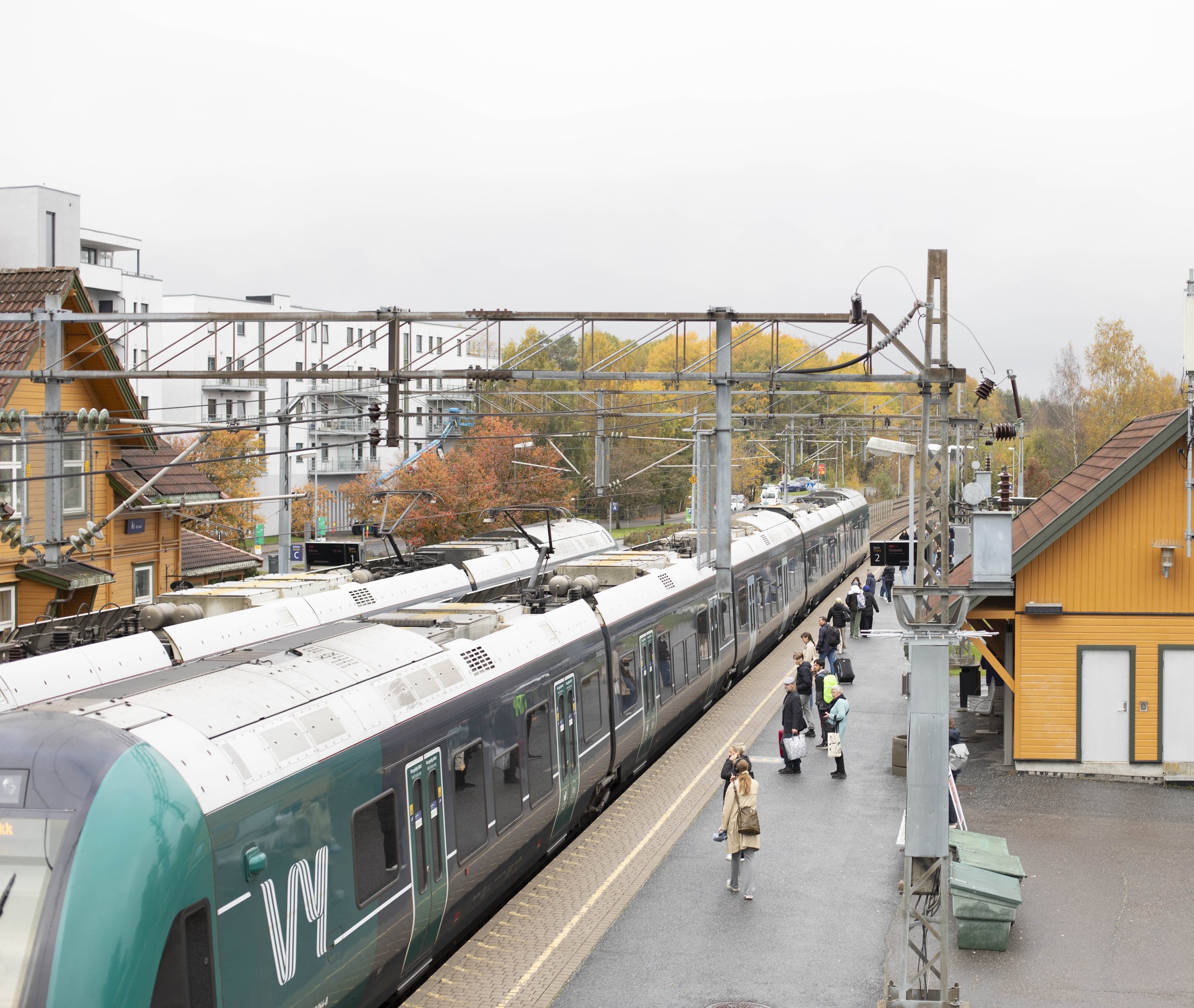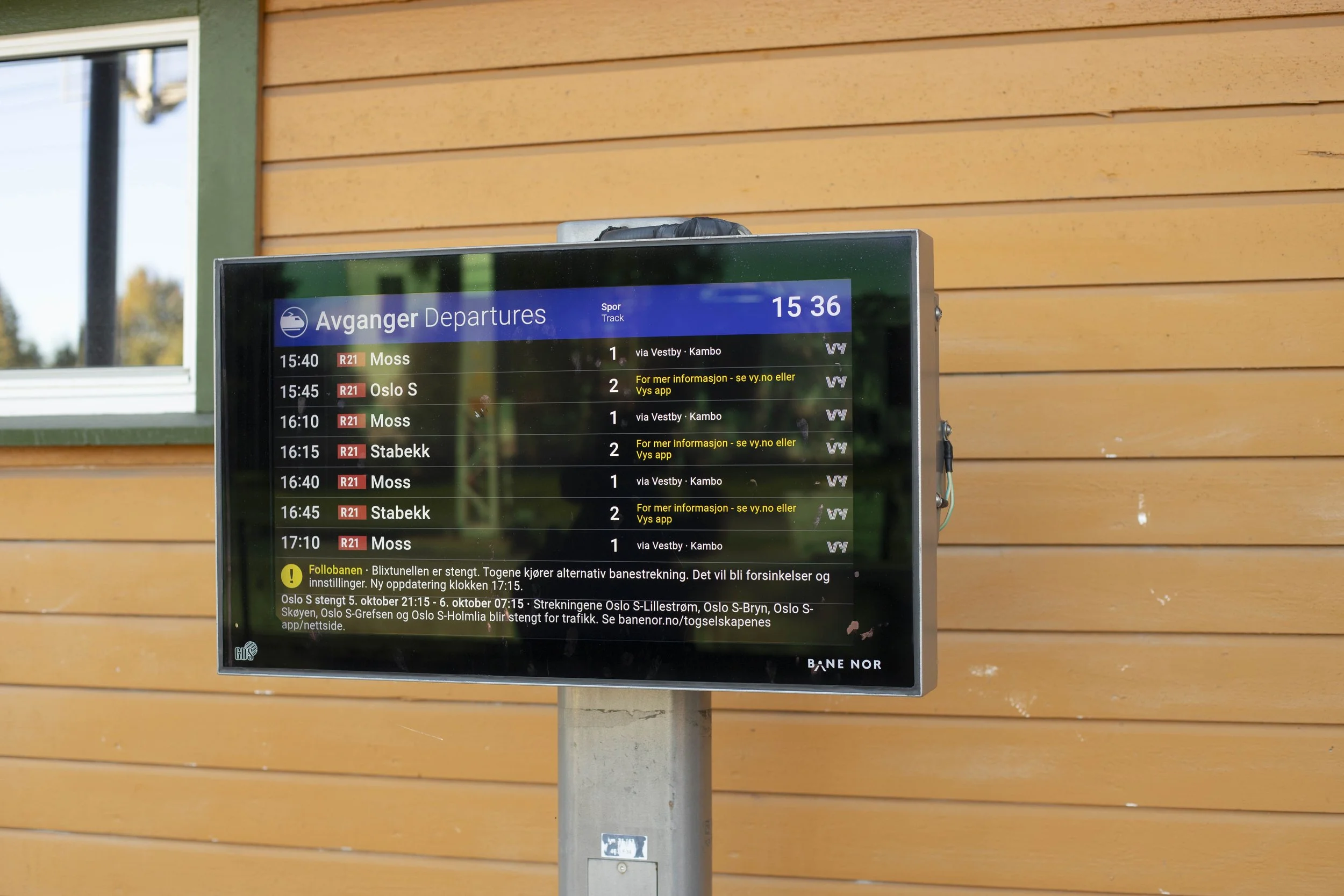The way out of the train chaos

The way out of the train chaos
Getting to a lecture or work is often one of the first challenges of the day. The question many people ask themselves is: "Will I catch the train?" One rushes off to the train station, only to arrive out of breath and realize that the train is late. Again. One may well ask oneself: What in the world is to blame for all the train delays?
Journalist: Jardar Nikan Alaei
Photographer: Jørgen Berg Yndestad
Translator: S. Faseeha F. Gillani
On an autumn afternoon, passengers stand in a row at Ås station, among them many students, waiting for the train home to Oslo. Tuntreet contacted a selection of the travelers to find out what their everyday situation with the train is like. Several people were able to state that the R21 train had been canceled that day. A young NMBU student says: "I have experienced a few times that there have been delays. I was actually supposed to take the train that was supposed to go before this one, but suddenly there was an intermediate stop, so it was this train here instead."
"Is pretty annoying when you miss out on your plans"
Consequences for everyday life
Several students feel that there are consequences for their own everyday life when trains are delayed or cancelled. The same student as before announces that "it becomes a bit stressful", as she does not always make it to school or work due to the train delays. Tuntreet received several comments about this, such as: "Most of the time I arrive late for my lectures", or: "It's quite annoying that you can't get to what you're supposed to". Several of the commuters say that they had not imagined that commuting would present so many challenges. One student sums it up like this: "One almost has to assume that there will be delays in taking the train."
The reasons for the delays
Some travelers may feel completely lost when it comes to the train issue. On Vy's own website, they state that 85.8% of the trains were on schedule in 2023. A train is considered punctual when it arrives at the terminus within 3:59 minutes of the stated time. In an e-mail, communications manager for Vy, Åge-Christoffer Lundeby, writes that the most common delays are due to faults in the infrastructure. "These are factors for which Bane NOR is responsible, and which are beyond Vy's control." These errors are most often due to signaling systems, electricity and rails, he writes further. "Most cancellations come as a result of planned stoppages, when Bane NOR has to carry out maintenance work, but cancellations that come 'urgently' are often caused by the same errors." Lundeby concludes by saying that: "The reasons that are within Vy's control and that cause the most delays and adjustments are faults on the trains." On its own website, Vy writes that the most common reason for delays is that the trains take longer at the stations. This can be due, among other things, to narrow doors and the fact that it takes extra time to get special luggage on board. Furthermore, Vy states that "trains in Norway are exposed to extreme stresses. Everything from steep and steep rail passages to ice, humidity and temperature fluctuations", which can also result in technical errors.
"From december, we can use both runs, and drive all planned traffic via Follobanen"
Follobanen vs. The Østfold line
Several of those who commute to and from Ås have clearly met on the route through Follobanen and Østfoldbanen. Depending on the time and place, one relies on one of these train routes. If you travel to Ås from Oslo early in the morning, the journey time is 38 minutes. If you travel in the afternoon, however, the journey time is only 17 minutes. A student says that she finds it annoying that you have to take the long route when you don't need to. Lundeby says that "Since April this year, Bane Nor has carried out extensive maintenance work in the Blix tunnel on Follobanen. This means that one out of two tunnel runs is closed until December 2024." In addition, "Vy cannot run all trains planned on Follobanen (R21, R22, R23 and RE20)." The solution is therefore "that the trains in towards Oslo in the morning and out of Oslo in the afternoon run on Follobanen, while the other trains run via Østfoldbanen. The choice has been made to save as much time as possible for as many customers as possible." Many are probably wondering when you start using Follobanen fully again? Lundeby replies that from December they will again be able to use both runs, and can therefore run all planned traffic via Follobanen then.
The other side of commuting
During the afternoon at the station, we also met travelers with a positive attitude towards commuting. Many people think that the trains most often arrive punctually - especially the R21 train. One of these students says that he has become used to commuting, and he does not find it difficult. Another says that the trains "most often arrive on time and if there are delays, the train only arrives a few minutes later. The fact that we at NMBU have academic quarters means that I always make it to my lectures." He also says that he finds it pleasant to commute, because he likes to sit with a book in hand and look out of the window at the beautiful sky and nature.
New measures were put on the table
When Tuntreet asked how Vy is working to correct the errors, Lundeby replies that political authorities have in recent weeks allocated more money to operate and maintain the infrastructure for the train network, such as electricity, signaling systems and rails. In the long run, this should improve the situation and reduce stress for both travelers and employees. With the new measures, everyday life can thus become a little easier for students and other travelers who spend a lot of time getting to and from lectures and work.
Fall afternoom in Ås train station: Many students have been waiting for the train to Oslo.
Cancellations and delays: Blixtunellen is closed. The trains are driving an alternative route.



